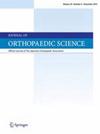Hip joint stress distribution changes depending on three-dimensional pelvic orientation: Finite-element analysis
IF 1.5
4区 医学
Q3 ORTHOPEDICS
引用次数: 0
Abstract
Background
Pelvis experiences changes in its orientation due to the alignment of the hip joint and spine, and its orientation might affect both joints. Pelvic tilt on the sagittal plane has been widely discussed; however, the pelvis is oriented also on the coronal and horizontal planes. This study aimed to examine how stress distribution on intact hip joint changes under the three-dimensional pelvic orientation.
Methods
Computed tomography data of five patients with unilateral pelvic girdle were analyzed. Thirteen models were evaluated by the MECHANICAL FINDER: neutral position at 0°; 10° and 20° anterior and posterior pelvic tilt; 10° and 20° pelvic hike and drop; 10° and 20° pelvic forward and backward rotation. Stress assessment was performed in four parts of the acetabulum: anterosuperior, posterosuperior, posteroinferior, and central parts.
Results
Compared with the neutral position, the mean value of the equivalent stress and maximum principal stress in the anterosuperior part significantly increased by 1.51 times and 1.57 times at 20° posterior tilt, respectively. The maximum principal stress in the anterosuperior part significantly increased by 1.44 times at 20° hike. A significant increase of 1.45 times was found in the maximum principal stress in the anterosuperior part at 20° forward rotation.
Conclusions
Local stress accumulated in the anterosuperior acetabulum at the posterior pelvic tilt, pelvic hike, and pelvic forward rotation, which might lead to hip overload. The effect of posterior pelvic tilt appears to be greater for the hip joint than at the pelvic hike or forward rotation.
髋关节应力分布随骨盆三维方向的变化而变化:有限元分析
背景骨盆的方向会因髋关节和脊柱的排列而发生变化,其方向可能会影响到两个关节。骨盆在矢状面上的倾斜已被广泛讨论,但骨盆在冠状面和水平面上也有定向。本研究旨在探讨完整髋关节的应力分布在骨盆三维方向上的变化情况。方法分析了五名单侧骨盆腰椎患者的计算机断层扫描数据。用 MECHANICAL FINDER 评估了 13 个模型:0°中立位;10°和 20°骨盆前后倾斜;10°和 20°骨盆前倾和后倾;10°和 20°骨盆前旋和后旋。结果与中立位相比,后倾20°时,前上部分的等效应力和最大主应力的平均值分别显著增加了1.51倍和1.57倍。徒步 20°时,前上部分的最大主应力明显增加了 1.44 倍。结论骨盆后倾、骨盆徒步旅行和骨盆前旋时,髋臼前上方的局部应力累积,可能导致髋关节超负荷。骨盆后倾对髋关节的影响似乎大于骨盆前倾或前旋。
本文章由计算机程序翻译,如有差异,请以英文原文为准。
求助全文
约1分钟内获得全文
求助全文
来源期刊

Journal of Orthopaedic Science
医学-整形外科
CiteScore
3.00
自引率
0.00%
发文量
290
审稿时长
90 days
期刊介绍:
The Journal of Orthopaedic Science is the official peer-reviewed journal of the Japanese Orthopaedic Association. The journal publishes the latest researches and topical debates in all fields of clinical and experimental orthopaedics, including musculoskeletal medicine, sports medicine, locomotive syndrome, trauma, paediatrics, oncology and biomaterials, as well as basic researches.
 求助内容:
求助内容: 应助结果提醒方式:
应助结果提醒方式:


